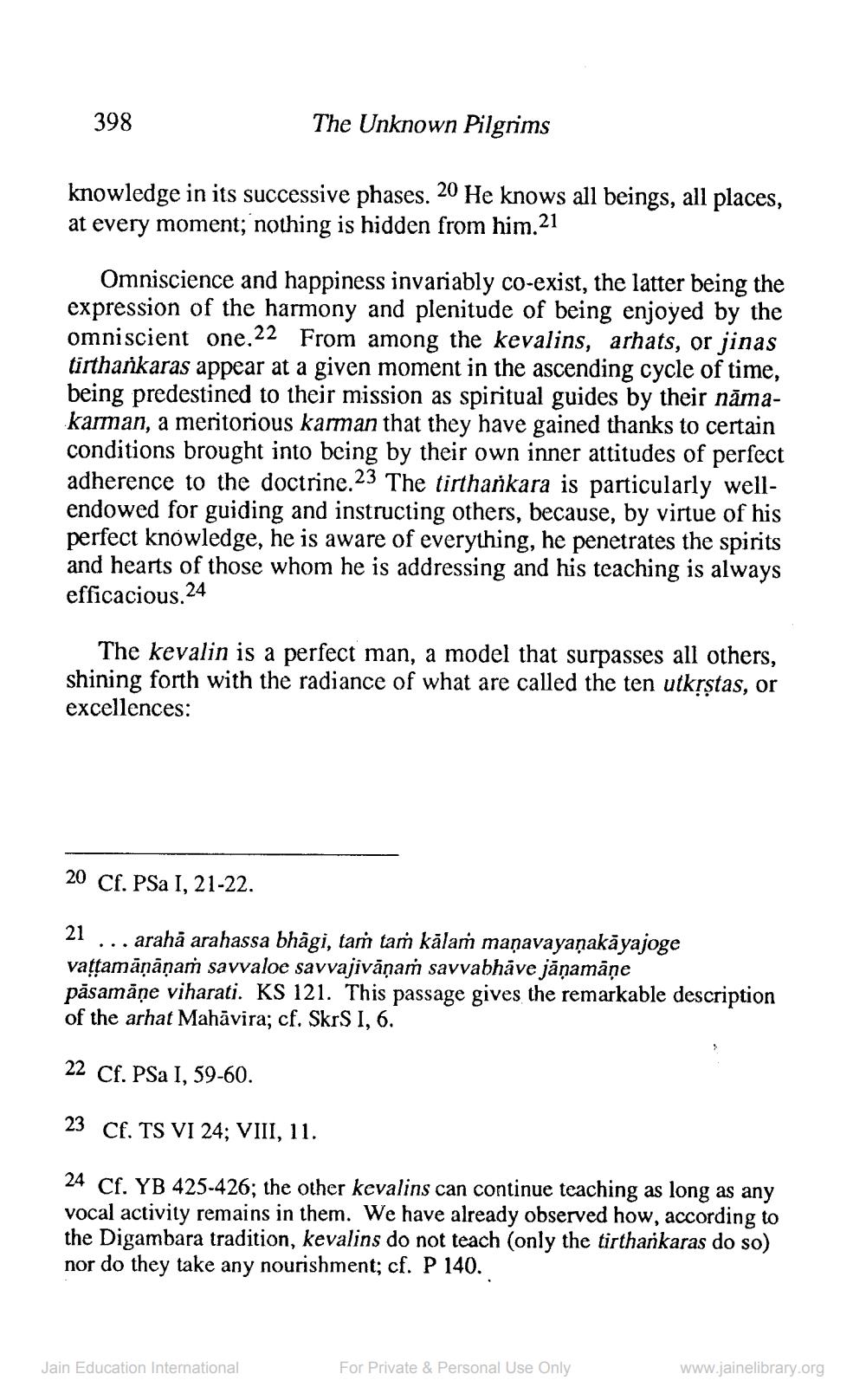________________
398
The Unknown Pilgrims
knowledge in its successive phases. 20 He knows all beings, all places, at every moment; nothing is hidden from him.21
Omniscience and happiness invariably co-exist, the latter being the expression of the harmony and plenitude of being enjoyed by the omniscient one.22 From among the kevalins, arhats, or jinas tirthańkaras appear at a given moment in the ascending cycle of time, being predestined to their mission as spiritual guides by their nāmakarman, a meritorious karman that they have gained thanks to certain conditions brought into being by their own inner attitudes of perfect adherence to the doctrine.23 The tirthankara is particularly wellendowed for guiding and instructing others, because, by virtue of his perfect knowledge, he is aware of everything, he penetrates the spirits and hearts of those whom he is addressing and his teaching is always efficacious.24
The kevalin is a perfect man, a model that surpasses all others, shining forth with the radiance of what are called the ten utkrstas, or excellences:
20 Cf. PSa I, 21-22.
21 ... arahā arahassa bhāgi, tam tam kālaṁ maṇavayaņakāyajoge vattamānāņam savvaloe savvajivānaṁ savvabhāve jānamāne pāsamāņe viharati. KS 121. This passage gives the remarkable description of the arhat Mahāvira; cf. SkrS I, 6.
22 Cf. PSa I, 59-60.
23 Cf. TS VI 24; VIII, 11.
24 Cf. YB 425-426; the other kevalins can continue teaching as long as any vocal activity remains in them. We have already observed how, according to the Digambara tradition, kevalins do not teach (only the tirtharkaras do so) nor do they take any nourishment; cf. P 140.
Jain Education International
For Private & Personal Use Only
www.jainelibrary.org




